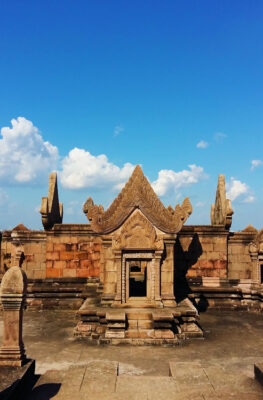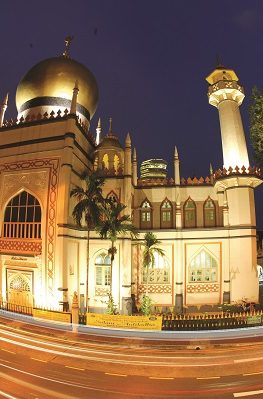Published on September 15, 2014
Many countries in which agriculture still is an important sector of the economy celebrate festivals related to the growing and harvesting sequence of their main staple, such as rice in (South East) Asia. Although those festivals may be characterized as traditional, with histories going back centuries, undoubtedly they too play an actual role in the life of today’s farmers and patrons who are dependent on agrarian produce.
Lively examples thereof are festivals held in almost all ASEAN countries marking the beginning of the season when paddy land is prepared for rice cultivation; such as the famous Ploughing Ceremonies in Cambodia and Thailand, customarily presided over by their respective Kings. The Festival signals to agrarians that it’s time to resume work in the field and to raise their spirit to work even harder.
The Royal Ploughing Ceremony (known as Preah Reach Pithi Chrot Phra Neangkol in Cambodia and Kan Phuetchamongkhon in Thailand) dates back to the mid-1200s, stemming from an ancient Hindu ritual meant to ensure a good harvest. Currently, the ceremony is a public holiday, celebrated annually. It marks the beginning of the rice-planting season in both countries; Myanmar, in contrast, ceased the ceremony upon the eradication of the kingdom in 1885.
With half of Thailand’s people still dependent on farming for a living, the Royal Ploughing Ceremony is an important yearly event that honors the bond between the King, the government, and the farmers who sustain the country. In its present form, the Ceremony is composed of two separate rituals; the Cultivating Ceremony, or Phraraj Pithi Peuj Mongkol performed in the Temple of the Emerald Buddha, within the Grand Palace complex and the Ploughing Ceremony, or Phraraj Pithi Jarod Phranangkal Raek Na Kwan, held the day after the Cultivating Ceremony, the Ploughing Ceremony takes place at Sanam Luang, a plot of land near the Grand Palace.
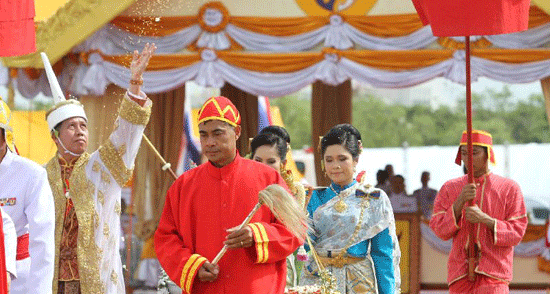
The Cultivating Ceremony, Thailand; Source: Tourism Authority Thailand (TAT)
Tourists who wish to see the Ceremony may contact the Tourism Authority of Thailand at their telephone number +66 (0) 2250 5500, or via email at info@tat.or.th.
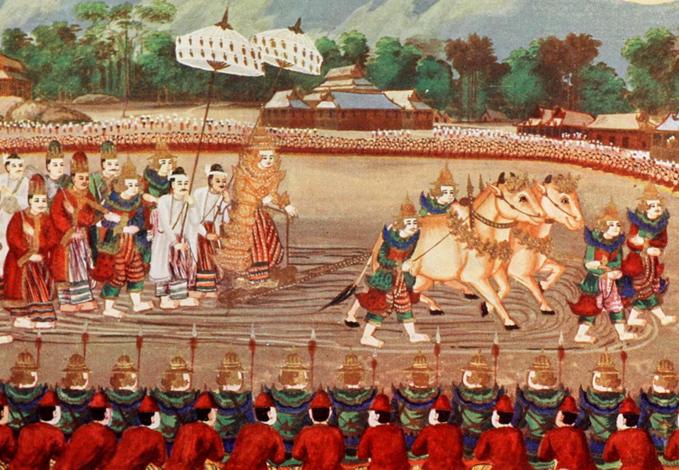
Historical image of The Royal Ploughing Ceremony performed in Thailand;
Source: http://bensalmons.wordpress.com
The ceremony is celebrated on an auspicious day in May, settled by the Indian prophetic system Hora; the exact date varying therefore year on year. The predictive character of the ritual is a well-known characteristic of many harvesting festivals. In this case, for instance, after the plowing of a furrow in a ceremonial ground by two sacred oxen hitched to a wooden plough, the beasts are offered several plates of rice, corn, green beans, sesame, fresh-cut grass, and water and rice- wine. Depending on what the oxen eat and what they don’t touch, court fortunetellers and clairvoyants make a forecast on whether the coming growing season will be plentiful.
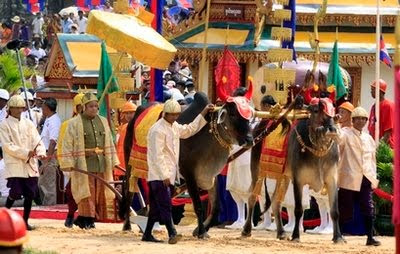
Royal Ploughing Ceremony, Angkor Wat, Cambodia 2010; Source: htpp://ki-media.blogspot.com
This year, the Cambodian oxen chose to eat out of only three trays and because their banquet contained variable percentages of rice and corn, while they chiefly overlooked the plates of sesame seeds, grass, water and wine, the ensuing forecasts were made: “Agrarians would revel in a modest output of their rice harvest but good earnings in ancillary crop production, specifically corn and beans. And since the stately oxen only breathed in the water and stayed away from the wine, the prognostication proclaimed that no serious floods would occur”.
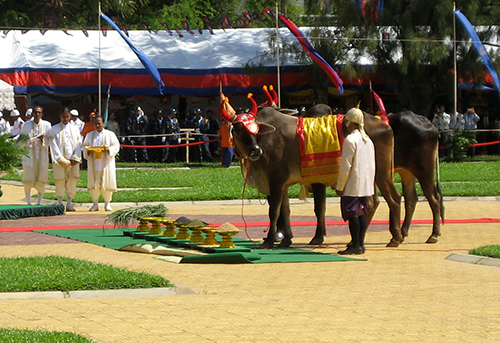
Trays with agricultural produce offered to the oxen, Royal Ploughing Ceremony, Cambodia;
Source: http://in.reuters.com
Although some Westerners may frown upon those predictions, they are taken very seriously by the local population, farmers, royals and the public alike. Guests attending the ceremony thus will try to collect some dispersed rice grains as good luck trinkets for their own harvest or just as a blessing for good fortune.
At the festival, that is believed to strengthen ties between the monarchy, government and farmers, people dress in brightly coloured old-style costume. In conjunction with the event there will be a three days exhibition of agricultural, agro-industrial, forest and domestic animal products as well as of rubber output products and agro-tourism.
The colourful, majestic ploughing ceremonies are a feast for the eyes and other senses and highly recommended to include in your travel itinerary. While the next Royal ceremony takes place in May 2015, those who have earlier plans could participate in a similar, equally interesting, harvest festival in Cambodia, the “Festival of the Water and Full Moon” (Pithi Bon Om Touk). One of the festival’s predictions stems from the drippings of burning candles, indicating the distribution of rainfall to the provinces across the country, which will come handy for those who plan their holidays to Cambodia for the next year.
It lasts for three days and include boat racing in traditional Pirogues manned by up to 60 oarsmen, fireworks, music and dance, the lot, and will be held in November 2014.
[ Hint: book accommodation well in advance as the most popular places along the riverside will be booked solid ]
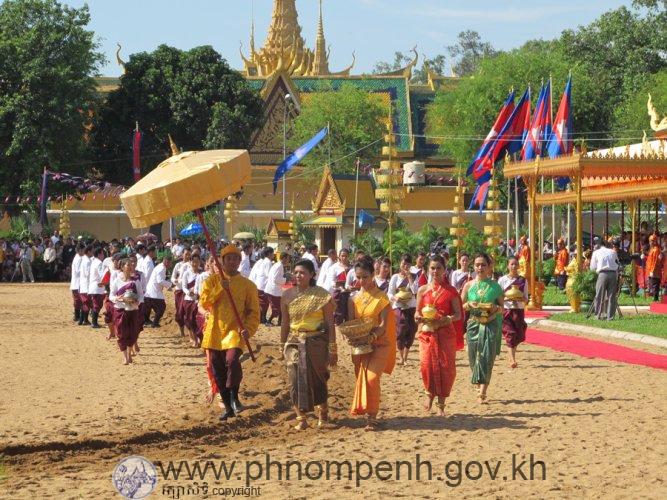
The Royal Ploughing Ceremony and Capital Hall, Phnom Penh, Cambodia;
Source: www.phnompenh.gov.kh



